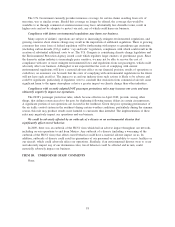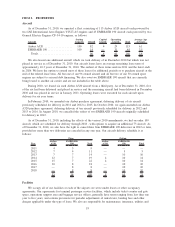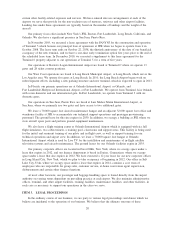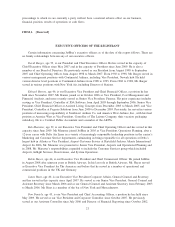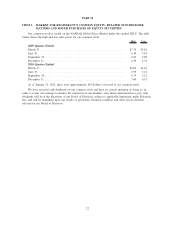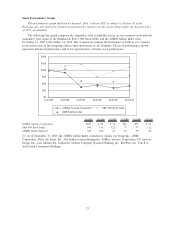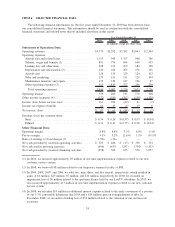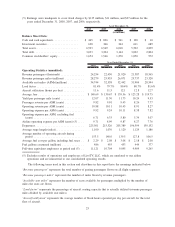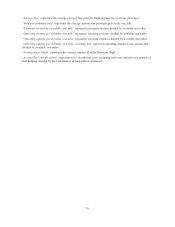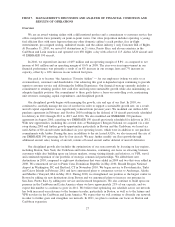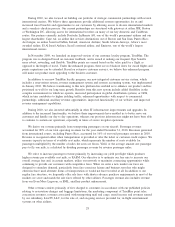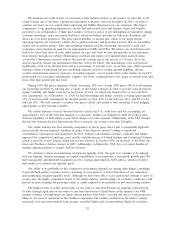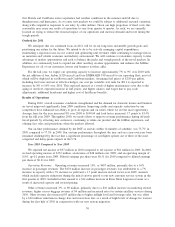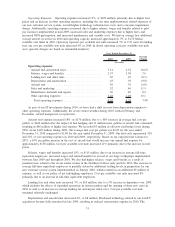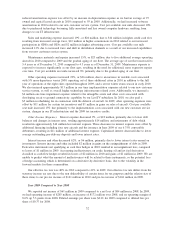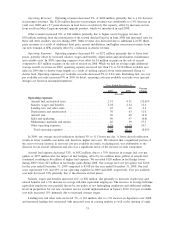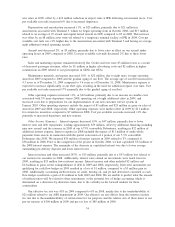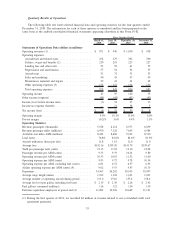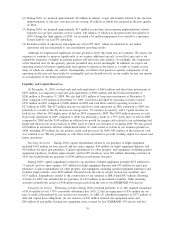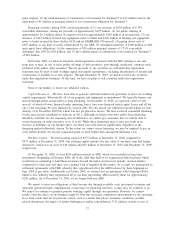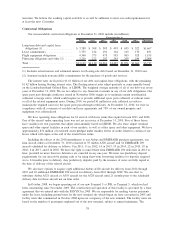JetBlue Airlines 2010 Annual Report Download - page 37
Download and view the complete annual report
Please find page 37 of the 2010 JetBlue Airlines annual report below. You can navigate through the pages in the report by either clicking on the pages listed below, or by using the keyword search tool below to find specific information within the annual report.During 2010, we also focused on building our portfolio of strategic commercial partnerships with several
international carriers. We believe these agreements provide additional revenue opportunities for us and
increased travel benefits and opportunities to our customers by allowing access to diverse international markets
and a seamless check-in process. Our current partnerships are structured with gateways at either JFK, Boston
or Washington DC, allowing access for international travelers on many of our key domestic and Caribbean
routes. Our partners currently include Deutsche Lufthansa AG, one of the world’s preeminent airlines and our
largest shareholder; Cape Air, an airline that services destinations out of Boston and San Juan, Puerto Rico;
Aer Lingus, an airline based in Dublin, Ireland; American Airlines; South African Airways, Africa’s most
awarded airline; El Al Israel Airlines, Israel’s national airline; and Emirates, one of the world’s largest
international carriers.
In November 2009, we launched an improved version of our customer loyalty program, TrueBlue. The
program was re-designed based on customer feedback, and is aimed at making our frequent flyer benefits
more robust, rewarding, and flexible. TrueBlue points are earned based on the value paid for a flight as
opposed to the length of travel. Under the enhanced program, there are no blackout dates for award flights and
points expirations can be extended. Based on extensive customer surveys, we believe this enhanced program
will make our product more appealing to the business customer.
In addition to our new TrueBlue loyalty program, our new integrated customer service system, which
includes a reservations system, revenue management system and revenue accounting system, was implemented
in January 2010. We believe transitioning to this new platform has enabled us to enhance our product and has
positioned us well for our long term growth. Benefits from this new system include added flexibility in the
complex environments in which we operate, increased participation in global distribution systems, or GDS,
which in turn contributes to higher yielding traffic, enhanced opportunities with respect to commercial
partnerships, additional ancillary revenue opportunities, improved functionality of our website, and improved
revenue management capabilities.
During 2010, we also invested substantially in other IT infrastructure improvements and upgrades. In
addition to the increased functionality, we believe these improvements have enabled us to better serve our
customers and handle our day to day operations, whereas our previous infrastructure might not have been able
to continue to sustain our operations, especially in times of severe irregular operations.
We derive our revenue primarily from transporting passengers on our aircraft. Passenger revenue
accounted for 90% of our total operating revenues for the year ended December 31, 2010. Revenues generated
from international routes, excluding Puerto Rico, accounted for 16% of our total passenger revenues in 2010.
Revenue is recognized either when transportation is provided or after the ticket or customer credit expires. We
measure capacity in terms of available seat miles, which represents the number of seats available for
passengers multiplied by the number of miles the seats are flown. Yield, or the average amount one passenger
pays to fly one mile, is calculated by dividing passenger revenue by revenue passenger miles.
We strive to increase passenger revenue primarily by increasing our yield per flight which produces
higher revenue per available seat mile, or RASM. Our objective is to optimize our fare mix to increase our
overall average fare and, in certain markets, utilize our network to maximize connecting opportunities while
continuing to provide our customers with competitive fares. When we enter a new market our fares are
designed to stimulate demand, particularly from fare-conscious leisure and business travelers who might
otherwise have used alternate forms of transportation or would not have traveled at all. In addition to our
regular fare structure, we frequently offer sale fares with shorter advance purchase requirements in most of the
markets we serve and match the sale fares offered by other airlines. Passenger revenue also includes revenue
from our Even More Legroom, or EML, ancillary product enhancement.
Other revenue consists primarily of fees charged to customers in accordance with our published policies
relating to reservation changes and baggage limitations, the marketing component of TrueBlue point sales,
concession revenues, revenues associated with transporting mail and cargo, rental income and revenues earned
by our subsidiary, LiveTV, LLC, for the sale of, and on-going services provided for, in-flight entertainment
systems on other airlines.
28


